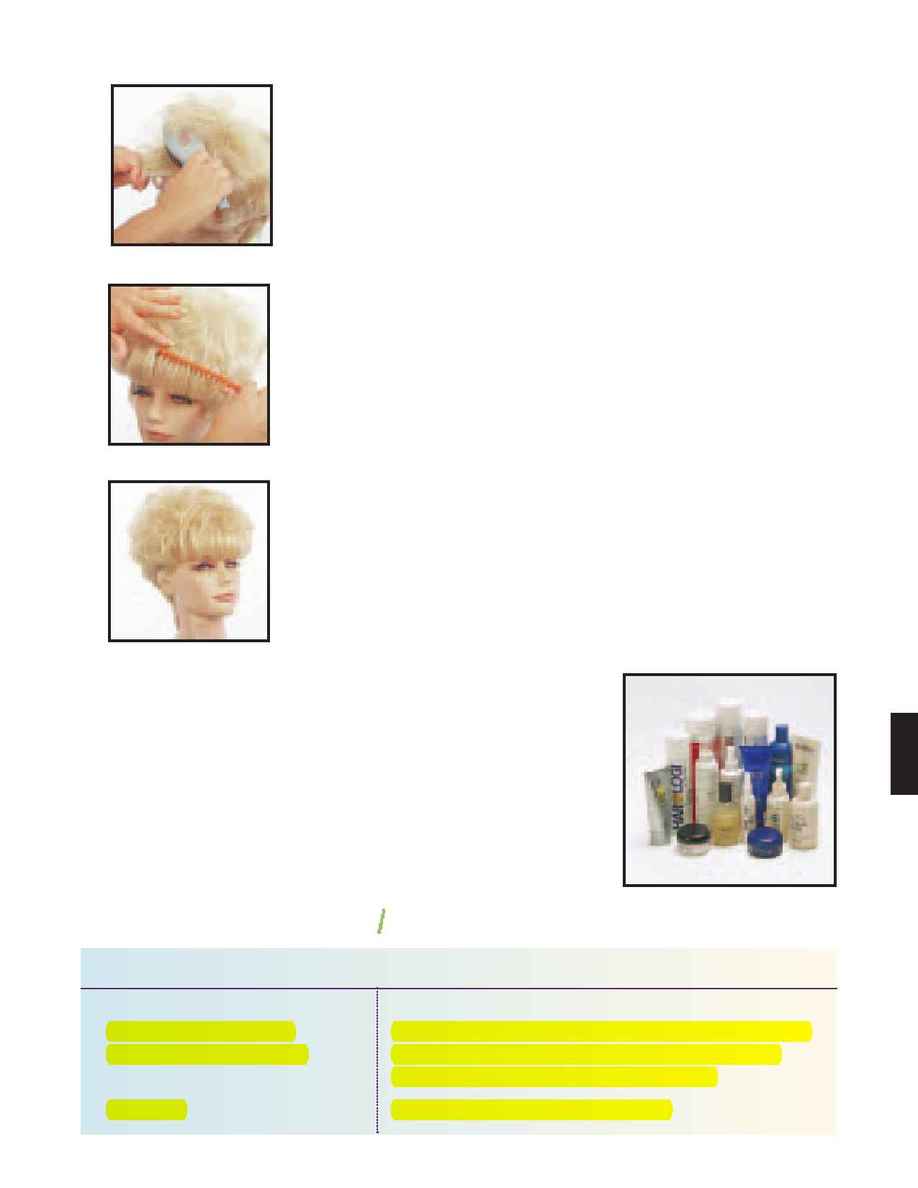
Backbrushing and backcombing
Backbrushing and backcombing techniques are used to add volume to
the hairstyle and further connect the shapes within the set, while adding
longevity to the style. These techniques use a comb or brush to system-
atically push the shorter lengths toward the base to create a cushion
effect. In addition to following the movements of the set, you will want
to use the base control of the set as a guide to determine how much
volume you need to create in a specific area of the hairstyle.
Refine the Lines and Texture
To refine the line and texture you will use a brush or comb to create the
desired textural effects. Emphasize the movements of the hairstyle
without exaggeration. Refining can be the final step of the process if you
and your client are pleased.
Detailing
Smaller, more refined touches, such as pleated textures or creative `piec-
ing' of the hair, for a more personalized hairstyle are known as detailing.
At this point you can really emphasize your client's personal style.
Detailing requires a light touch and a certain amount of restraint on your
part. Too much `detail' can overwhelm the integrity of the design,
resulting in a fussy or overworked hairstyle.
Hairstyling Essentials
In order to achieve the styling effects desired, you need to be famil-
iar with the implements/supplies, products and equipment used
during hairstyling services. The following charts identify these
styling essentials and equipment and define their basic functions.
Styling products are also called liquid tools since they are essential to
achieving lasting styles.
Hairstyling Implements
/
Supplies
IMPLEMENT/SUPPLIES
FUNCTION
Combs
All purpose Styling Comb
Parts and distributes the hair; accurately measures if comb
(Molding or Cutting Comb)
is calibrated; closely set teeth create a smooth surface;
wider spaced teeth separate and arrange hair
Tail Comb
Sections, parts and distributes the hair
325
1
0
HAIRSTYLING
